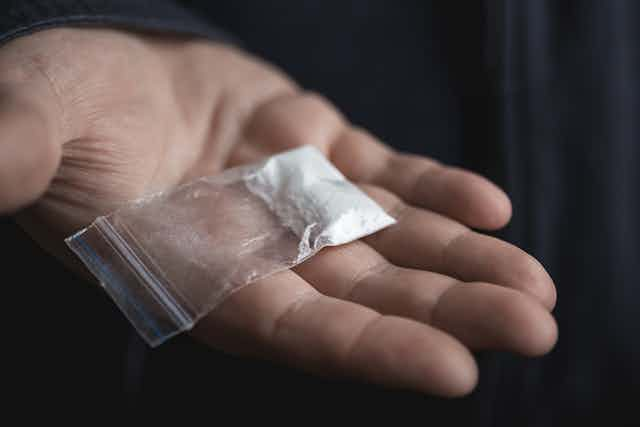Drug deaths in the US involving both opioids and cocaine have increased dramatically in the past decade, according to a new report from the Centers for Disease Control and Prevention (CDC).
Drug-related deaths associated with stimulants, such as cocaine, methamphetamine, amphetamine and methylphenidate, doubled between 2011 and 2021. And deaths associated with using both stimulants and opioids, such as heroin, morphine, fentanyl and methadone, increased by about sevenfold over the same period. The biggest increases have been seen since about 2019.
Cocaine and methamphetamine are stimulant drugs, whereas opioids, such as heroin and methadone, are depressants. This means that cocaine and methamphetamine will, among other things, make you euphoric and more alert with more energy, while heroin has the opposite effect. After an initial rush of euphoria, heroin users report a long period of drowsiness.
It is unclear why people take both types of drugs together. It is not thought that the euphoric effects are changed significantly by taking these drugs together, but cocaine may help with acute withdrawal from heroin. Another explanation is that, by taking both types of drug together, the user balances the stimulant and depressant effects of the drugs. Some medicated opioid abusers take stimulants for an alternative high or to counteract the sedative effects of their medication.
Different mechanism
These drugs work via different mechanisms. The stimulants work mostly by activating the brain’s dopamine system. Dopamine is a neurotransmitter, or chemical messenger, important in the brain reward system, so it is critical to both feeling joy and euphoria.
Heroin and similar drugs such as methadone or fentanyl work via the body’s opioid system. The brain and body have various proteins attached to cell surfaces involved in transmitting the opioid signals. The most relevant proteins here are the mu opioid receptors. These receptors are activated by opioid painkillers.
Unfortunately, it is easy to overdose on opioids such as heroin. Overdose can lead to respiratory depression and then respiratory failure. This is when there are long pauses between breaths, which become more like sighs and then a loss of consciousness followed by cessation of breathing.

The exact mechanism whereby opioids cause respiratory depression is unknown but probably involves opioid receptors found in the brainstem.
Cocaine and methamphetamine are less likely to kill you but are still dangerous drugs causing heart palpitations, increased blood pressure and increased risk of stroke. Methamphetamine is especially associated with dangerous hyperthermia leading to multi-organ toxicity.
Taking stimulants together with an opioid clearly increases your risk of drug-related death.
One reason that we may be seeing more drug-related deaths is due to the increased use of fentanyl. Fentanyl is a synthetic opioid that is 50 times more potent than heroin and 100 times more potent than morphine, with a faster onset of action. It is therefore more likely to lead to respiratory depression than other opioids, such as heroin or methadone.
Fentanyl is increasingly being used as an adulterant in street drugs, such as heroin. This is because it is cheap and very powerful, so only a small amount is needed to have a large effect.
Europe’s problem too
It is not just the US that is seeing a rise in so-called polydrug-related deaths. Data from the European Monitoring Centre for Drugs and Drug Abuse) show that deaths from polydrug use, especially those involving opioids, are also increasing in Europe. The European data shows that it is mostly men who are dying and that older age groups are increasingly dying from drug taking.
Taken together, it can be seen that there may be a worldwide increase in polydrug-related deaths and in particular those involving both stimulants and opioids.

